





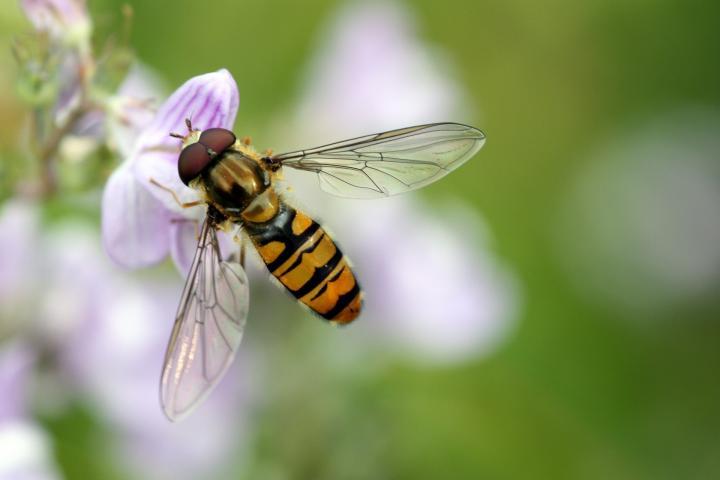
Here’s a short list of great beneficial insects with pictures—and with tips on attracting these good bugs to your garden.
The average backyard is home to thousands of insects. Only about a tenth of these are destructive. Most are either beneficial or harmless. Beneficials fall into three categories:
You may have seen these good guys in your garden but were not formally introduced. Here are a few you might want to meet:
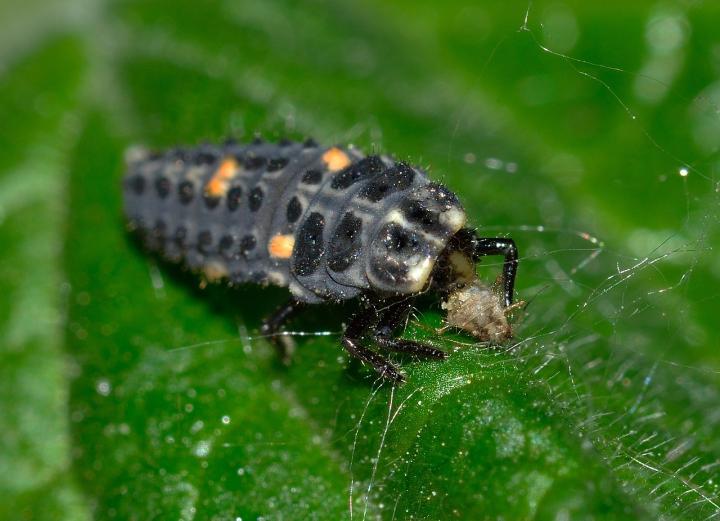
Ladybugs start out life looking like this. Did you know that a ladybug larva can eat up to 40 aphids an hour?
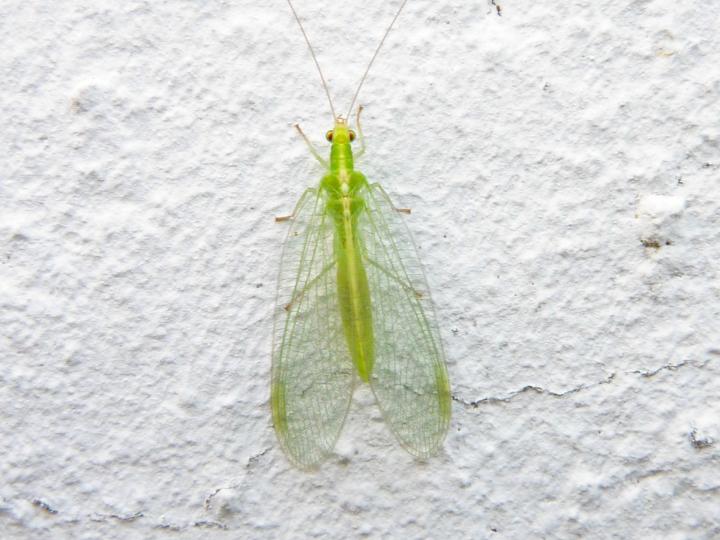
Adult green lacewings feed on pollen and nectar but their larvae, which look like little alligators, suck the juice from many soft-bodies insects, including caterpillars.
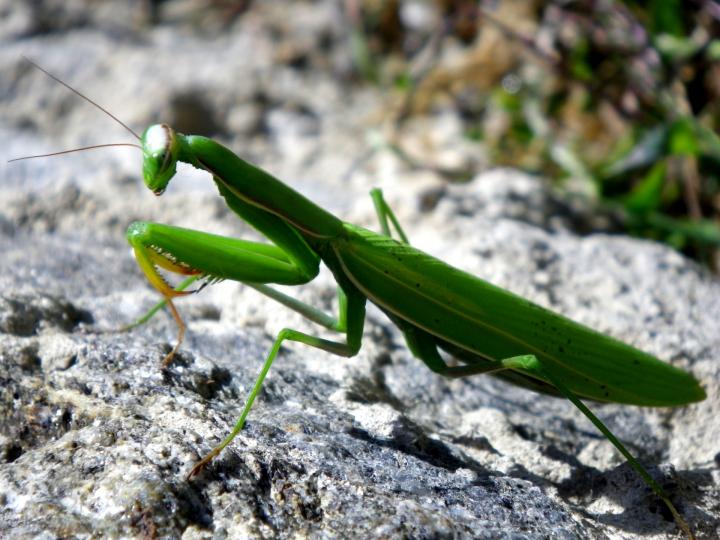
A praying mantis will make short work of any grasshoppers that are troubling you but too many praying mantids will turn to eating other beneficials, butterflies, bees, and even each other!
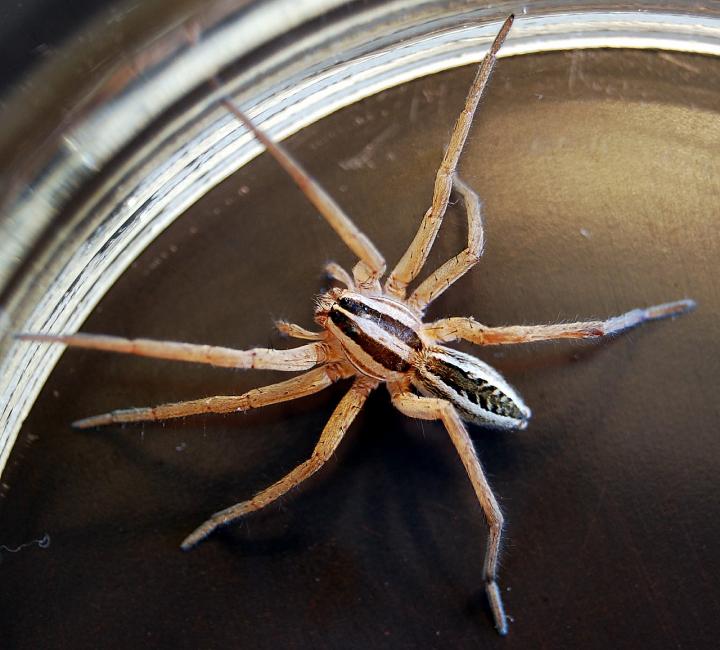
Wolf spiders are often overlooked as a beneficial insect but they are very effective pest controllers. Since they are attracted to their prey by movement, they eat many live insects.
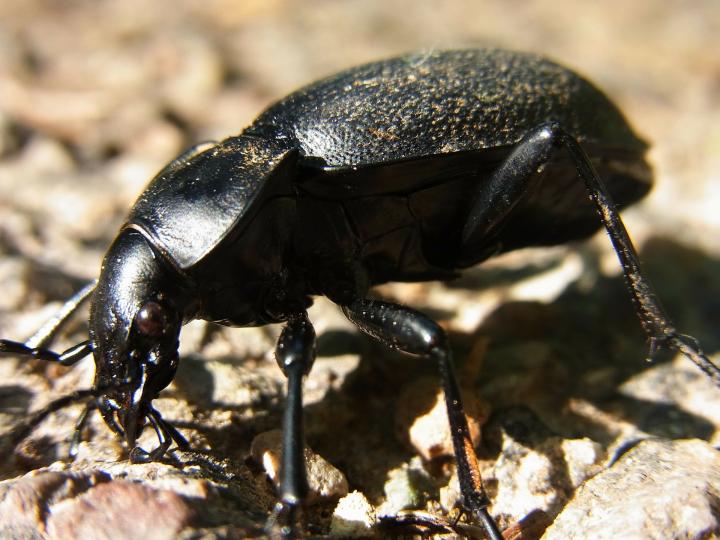
Ground beetles are predatory as adults and as larvae. They will eat a wide range of insects including nematodes, caterpillars, thrips, weevils, slugs, and silverfish.
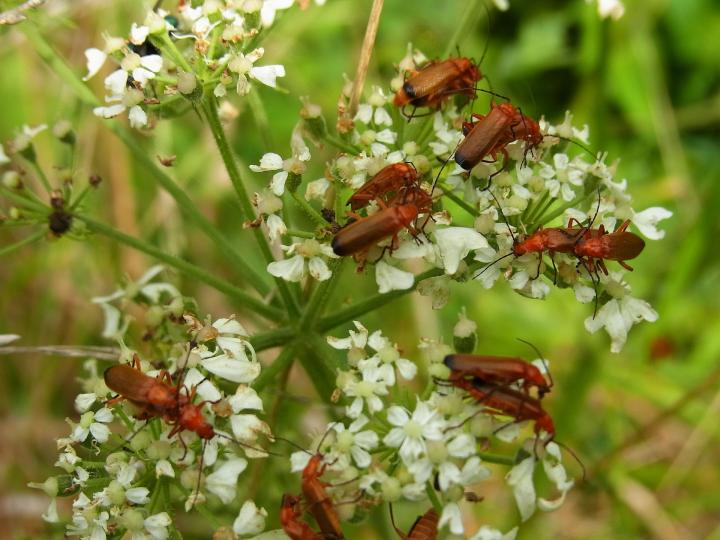
Soldier beetles are an important predator of Mexican bean beetles and Colorado potato beetles. Like many beneficials, they are attracted to plants that have compound blossoms.
There is another soldier beetle called the spined soldier beetle that looks like a stink bug. I fear I may have killed more than my share of them thinking they were bad guys!
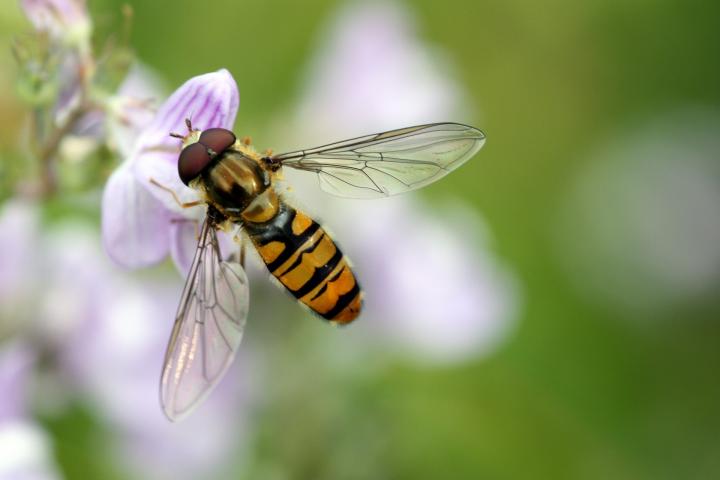
Hoverflies look like yellowjackets but don’t sting. They feed on pollen and nectar and are important pollinators. Their larvae are voracious predators, killing aphids, caterpillars, beetles, and thrips by sucking the juice from their victims.
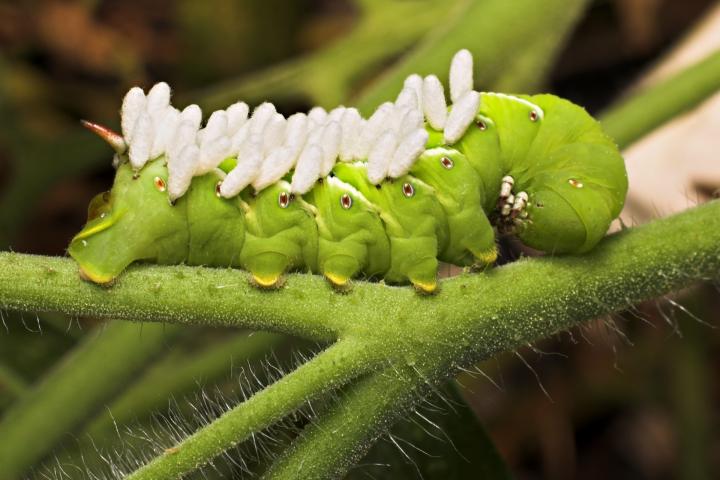
Parasitic wasps are very tiny so you will probably not see them at work but they are very effective.
Like all living creatures, beneficial insects have a basic need for water, food, and shelter. By providing these things, your garden will be an inviting home for them.
A diversity of plants will attract a wide range of insects. Many beneficials appear in the garden before the pests do and need alternative food sources like pollen and nectar if they are to stick around.
Remember that if you resort to using chemical pesticides to control insects, you will kill good and bad bugs alike. Even the so-called “natural” pesticides like pyrethrum and rotenone will kill many beneficial insects.
In her book Green Thoughts Eleanor Perenyi writes, “Every insect has a mortal enemy. Cultivate that enemy and he will do your work for you.”
~ By Robin SweetserGet inspired by Robin Sweetser's backyard gardening tips. Robin has been a contributor to The Old Farmer's Almanac and the All-Seasons Garden Guide for many years. She and her partner Tom have a small greenhouse business and also sell plants, cut flowers, and vegetables at their local Farmer's Market.
Copyright © www.100flowers.win Botanic Garden All Rights Reserved